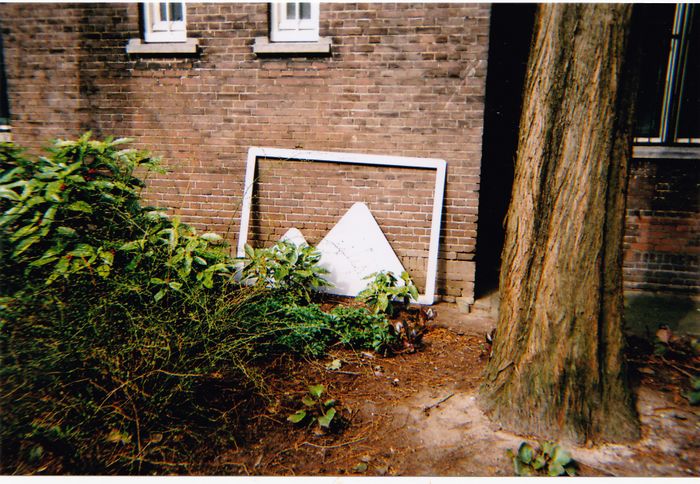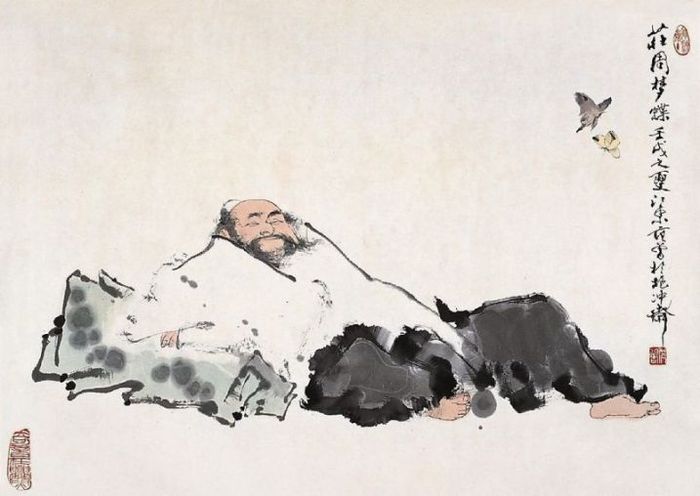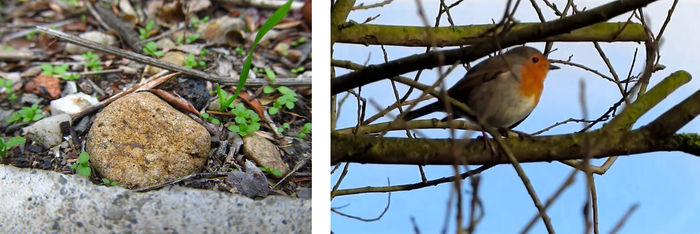Graduate Proposal SOL
Abstract
To equate “reality” with art, understanding their relationship, and its significance is something unknown. The unknown makes us curious and make us want to invest or believes in them. It has to be something, we want an answer, it can’t be nothing. The desire is so big that we want to know, so we use or imagination.
Would you believe in what you believe in if you were the only one who believed it?
The world we experience is not an exact image of objective reality; it is a virtual reality, generated from sensory input filtered through theories, knowledge, emotion, associations and so on. We do not experience reality directly. We have to desire to place things in order, even our own perceptions. Perception can be obscure and mysterious, magnifying our suspicions to facts, to the degree where they seemed fundamentally “genuine”. To equate “reality” with art, understanding their relationship, and its significance is something unknown. The unknown make us curious and make us want to invest or belief in them. It has to be something, we want an answer, it can’t be nothing. The desire is so big that we want to know, so we imagine.
WHAT?
Plan A: The graduation location is almost sure that it will be Piet Zwart, therefor the studio becomes part of work. When I saw the bars for the windows, I imagine that the studio is the world. We are trapped in that room by the ideology of the world. We don’t experiencing the world as the real, we perceive it how it’s generated by someone else. A different approach or the second layer is; are we trapped in the real, or are we still dreaming waiting to wake up in the real? I feel like Alice (in Wonderland) who was trapped in the room where she was too big for, and off course she was also dreaming. I feel like Alice in this world, trapped by reality and ideology. I was picturing and sketching a human what is too big or the space made of ideology, like newspaper (papirmasse), or digital devices like a television or a phone. Revealing some hidden reality in the body of the human that I want to make. The position of the human is bended, and fits barely in the studio.
Plan B: Expand the ‘Journey to Fuji’ – project with different symbols combine with others fiction, factional stories. The symbol of ‘two mountains’ represents the ‘empty placeholder‘ or a symbol of an image. What does that say? What kind of language is it? Where does the symbol come from? It’s not just a sign. It’s starts a dialogue with the symbol, that you usually take for granted.
By researching all the different symbols from mountains I bumped in to the symbol of landscape mode on a camera. I immediately saw a connection with the Fuji Camera and the Fuji Mountain in Japan. I was never sure if the symbol comes from there, but I came up with a fictional-factional story about the mountain-symbol. In combination with the installation it has creates a kind of Japanese- myth experience. I wanted to change the context of the symbol, and the point of view of the ‘two mountains’ in order to start a dialogue.
I want to use the same research method as what I did with the ‘Journey to Fuji’ – project, to come up with more story for symbols like; Wifi-symbol, Apple-symbol, Recycle-Bin symbol, ect.
The Start of the Process
I created two video compilations, one using the search ‘Ufo Nederland’, the other one with the search ‘Jesus in the sky’, both on Youtube. What you see is a lot of skies with flashing lights or clouds, and the responses on the background of the video, some with nice added sounds and visuals, to support that there is something there. Most of the time you see nothing, just empty sky. You are experiencing their informed desire, through the video that they make and attempt to create proof that it is real by putting it online. We all see the same things because they are shared symbols. If you believe in god, you will see him all the time. Symbols are often conceptualised as intersubjective only to the extent that they are shared. Language, it is said, is composed of symbols that we share, and because we share these symbols we are able to communicate, it’s the psychological relation between people. A good example is to believe in a religion, they all have the same language and share the same symbols. The sky in the videos feels also like an abstract painting, because most of the video makers experience an emotional feeling. To compare it with, for example, the famous painter Rothko, where you get an overwhelming emotional experience by just looking at his colourful painting. It works as a mental exercise. World is very rich, if only just the sky can trigger your imagination and your beliefs.
I believe during the video compilation of the ‘Ufo Nederland’ and ‘Jesus in the Sky’, the video makers are experiencing an MacGuffin. The MacGuffin is a pure void which functions as the object cause of desire. There is something that attracts the viewer but what it is, is not clear, it spins a story around nothing. A pure nothing which is none the less efficient. An MacGuffin is a goal, desired objects, or other motivator. The types of MacGuffin can be an object, place, person, or more abstract, victory, glory, power, love, or some unexplained driving force. Most clear MacGuffin’s you will see in movies like the suitcase of Pulp Fiction, as a void and the whole story spins around this suitcase. In art you see MacGuffin all the time, as a placeholder, or as frame. for example what I did with the Journey to Fuji story, the image-placeholder symbol was my MacGuffin and I created a story around that.
For my next experiment I’m using the story of Zhuangzi, The Butterfly Dream, as my placeholder. I’m going to interchange words, like ‘Zhuangzi’ and ‘butterfly’, of the original story. My versions of this story creates a different kind of relationships, and a different intersubjectivity. With this placeholder I created visuals, the story is to support they images.
The story is intended as more than a charming episode in the life of a sage: it is meant to make a philosophical point about what we take to be real. The general question – do I wake or sleep? – seems both valid and ultimately unanswerable. If we do not know whether we are waking or dreaming, we cannot appeal to a body of knowledge belonging to the world of the waking. All the sights and sounds, feelings and emotions in the dream can be just as vivid and intense as our experience in reality. The story is an exercise in detachment in two areas of life: emotional obsessions and material obsessions. The realization that if we can see how dreams can seem completely real, then we can also see how reality can be just like a dream. There is the temptation to find oneself ‘understanding everything correctly.’
So let me be clear on this, I don’t try to fool the viewer or make a gimmick, I want to examine their beliefs. To believe in desires we have a goal in life, they give us pleasure, or joy, or even healing. When we achieve a desire, we create a new one. We find ourselves believing, and believing in whatever we perceive as enabling us to thrive. We believe (most of the time) with each other, because we communicate with the same intersubjective language. I think intersubjectivity can play a big role in communication of the work; let the viewer belief by using symbols we all share.
Experiment Zhuangzi Story
Original
Once upon a time, I, Zhuangzi, dreamt I was a butterfly, fluttering hither and thither, to all intents and purposes a butterfly. I was conscious only of following my fancies as a butterfly, and was unconscious of my individuality as a man. Suddenly, I awaked, and there I lay, myself again. Now I do not know whether I was then a man dreaming I was a butterfly, or whether I am now a butterfly, dreaming I am a man. Between a man and butterfly there is necessarily a barrier. The transition is called Metempsychosis.
Version 1
Once upon a time, I, stone dreamt I was a bird, fluttering hither and thither, to all intents and purposes as a bird. I was conscious only of following my fancies as a bird, and was unconscious of my individuality as a stone. Suddenly, I awaked, and there I lay, myself again. Now I do not know whether I was then a stone dreaming I was a bird, or whether I am now a bird, dreaming I am a stone. Between a stone and bird there is necessarily a barrier. The transition is called Metempsychosis.
Version 2
Once upon a time, I, tree dreamt I was an elephant, tramping hither and thither, to all intents and purposes as an elephant. I was conscious only of following my fancies as an elephant, and was unconscious of my individuality as a tree. Suddenly, I awaked, and there I lay, myself again. Now I do not know whether I was then a tree dreaming I was an elephant, or whether I am now an elephant, dreaming I am a tree. Between a tree and elephant there is necessarily a barrier. The transition is called Metempsychosis.
Version 3 – Cat & Bat
Version 4 – Waterfall & Whale
Version 5 – Human & Butterfly
Metempsychosis: The transmigration of the soul, especially the passage of the soul after death from a human or animal to some other human or animal body.
What’s next?
After these experiments I was still wondering, ‘what do we take as real?’. The things that I was reading and the points that I was making is something we know for ages or years, what if we related these subjects to the media culture, social topics, the ‘now’ where we living in. Get loss of this abstract vision and bring it in relation with contemporary issues. How do we belief now? How do I believe?
We all know the videos and images of seeing an UFO in the sky or a Jesus in a cloud, can I make new representation of what is happening now. Can I show the dilemmas of reality in some currents happenings. The reality what is manipulated ideology and the reality what is bin hidden for our eyes. Show the ‘real’ reality of the now.
That’s way I come up with two plans, to research two different kind of languages. One, the manipulated world around us what we want to believe, and the other more in a storytelling way to give symbols more than what they are.
Relation to previous practice
Last year I found a practice and language as a visual artist reflecting media culture by playing between fact and fiction. During the third Thematic Project with Florian Cramer I embraced myself as a storyteller and maker. Creating disappearance of an object/image, by showing my own categorization (like Borges) with (hard to classified) existing, non- existing and fantasy animal illustrations. By showing this with a slide projector creates an zoology class in the old-days. You will not know what’s real or not, you enter my little fantasy world. The Guide shows you the classification of alive, extinct and fiction with a short description of the animal. The text involved also a combination of factional and fiction. This all together with an audio voice telling you this descriptions and when you have to go to the next slide, makes my installation of Zoology Illustration completed. It was an appealing and surprisingly accessible visual installation. The work shows an artistic competence and sovereignty of concentrating on necessary aspects.
Method
Last year I created a Uncreative Tool for methodologies, this year I’m going to expend this tool and use it as a guide for my graduate project. This tool is to help you in a creative process by showing u all different kind of ingredients what you can use on your topic, object, image, your start.
Ingredients:
· Copy
· Combine
· Create Something Different
· Translate
· Transform
· Reverse
· Destroy
During my own project-process I create more ingredients for the Uncreative Tool, so this tool is also an ongoing process.
References
Books:
Matilda O'Donnel MacElroy, Alien Interview, 2008
Milton William Cooper, Behold a Pale Horse, 1991
Col. Philip J Corso, The Day After Roswell, 1997
Headquarters United States Air Force The Roswell Case, 1963
Headquarters United States Air Force, The Roswell Report, 1995
George Duthuin - Unimaginable Museum
André Malraux - Imaginary Museum http://www.imaginarymuseum.org/MIM/index.html
David Joselit - After Art
Hito Steyerl - The Wretched of the Screen
Thierry de Duve - Kant after Duchamp
Borges - Book of imaginary Beings
Baudrillard - Simulacra & Simulation
Barthes - The Reality Effect
Umberto - Travels in a Hyper Reality
Luigi Serafini - Codex Seraphinianus
Brain in a vat
Zhuangzi - The Butterfly Dream
Zizek - The Plague of Fantasies
Zizek - The Sublime Object of Ideology
Zizek - Welcome to the Desert of the Real
Magazine:
Elephant Issue 23 - What is Post-Internet Art?
Links:
http://www.wired.com/insights/2014/03/internet-one-step-away-advanced-digital-earth/
http://www.bbc.com/future/story/20141015-will-we-fear-tomorrows-internet
http://www.e-flux.com/journal/too-much-world-is-the-internet-dead/
http://johncrossley.co.uk/John_Crossley/Leeds_13.html
https://www.youtube.com/watch?v=AvhPvTa_pT8 _> Alien autopsy
http://www.circlemakers.org/ _> Steve
http://www.forensic-architecture.org/ _> Susan Schuppli (Annet)
http://www.godlikeproductions.com/ (Aymeric)
http://www.faelschermuseum.com/Seite1_englisch.htm -> Fake Art Museum
Movie:
Fantastic Planet
Words:
Macguffin
Cargo Cult





